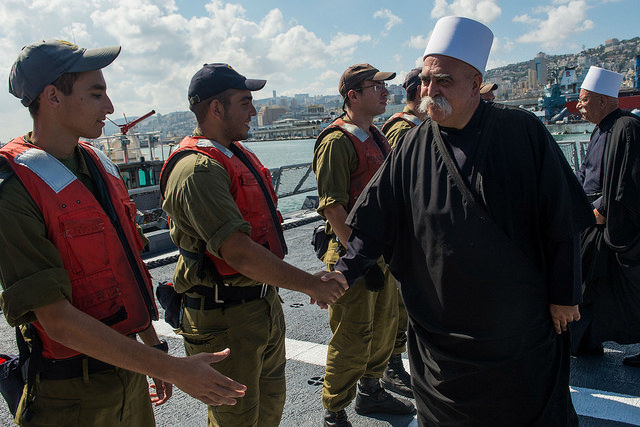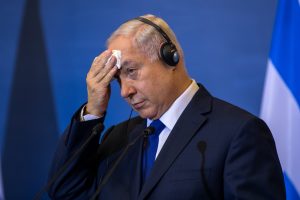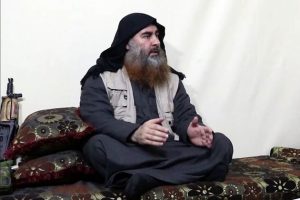by Emile Nakhleh
The Druze, a centuries-old Arab community and an offshoot of Shia Islam, is the latest religious minority in the Levant to suffer the wrath of Islamic extremists. Jabhat al-Nusra or the Nusra Front, an al-Qaeda affiliated group fighting the Assad regime in Syria, in June of this year killed nearly two dozen members of the Druze community in Syria’s northern region near the town of Idlib. Nusra, like the Islamic State (ISIS or IS) and other radical Sunni groups, views the Druze, much like the Shia, as “apostate” Muslims that should be killed. Islamic militants have already attacked Shia and Christian communities and their places of worship in Syria, Iraq, Yemen, Saudi Arabia, and Bahrain.
In her thoughtful New York Times Magazine article, “The Shadows of Death,” Eliza Griswold has chronicled the plight of Christians in the Middle East and how attacks by radical Islamic groups have led to the Middle East emptying itself of Christians. This is a sad tale for the Christian community, for other religious minorities, and for the region as a whole. The Druze community in Syria is becoming understandably apprehensive about whether it would face a similar fate.
As the intolerance of religious minorities—Christians, Druze, and Shia—bubbles to the surface, the Sunni majority becomes more regressive. The artistic, cultural, economic, religious, and social diversity, which has been part of the multiethnic and multi-religious mosaic in the Levant and across the region, is rapidly disappearing to be replaced by backwardness and retrogression.
The emerging Sunni Muslim homogeneity signals the return of the heartland of Islam to the dark old days of divisiveness between Dar al-Islam, the “abode of peace” where Muslim majorities live, and Dar al-Harb, the “abode of war” where the rest of humanity lives. This geographic and ideological separation might have made sense a millennium back when most Muslims lived in the Middle East. Today, by comparison, hundreds of millions of Muslims live outside the region.
Although majorities of Christians in recent decades have immigrated or sought asylum in Western countries, other minorities such as the Shia and the Druze have remained in the region and continue to suffer persecution and discrimination.
The Druze and Israel
Israel is a special case for the Druze, which also explains Israel’s potential military entanglement in Syria on behalf of the Druze. Following the establishment of the state of Israel, the Druze religious leader, Sheikh Amin Tarif, signed an agreement committing Druze young men to serve in the Israeli army. In fact, Druze soldiers and border patrol policemen have fought and died in Israel’s wars against fellow Arabs in Palestine, Lebanon, Egypt, Jordan, and elsewhere. They fought Hamas in Gaza and Hezbollah in Lebanon. Memorials for fallen Druze IDF soldiers have been erected in several Druze villages in Israel.
The Druze are represented in the Israeli Knesset or parliament, and some of them have held senior positions in the Israeli government and diplomatic service. Unlike the Muslims and Christians in the Jewish state who are considered Arabs, Israel has officially recognized the Druze as a separate minority, thereby bestowing on them certain privileges in employment and housing not available to other minorities. Druze communities in Syria and Lebanon also support the states in which they live and have served in the military and other government positions.
Aside from the human tragedy, what makes the Druze status particularly troubling is that further Sunni militant attacks on the Druze community in Syria, especially near the Israeli-occupied Golan Heights, could easily draw Israel into the Syrian conflict. Leaders of the Druze minority in Israel have been pressing the Israeli government to intervene militarily on behalf of their co-religionists across the border.
A mob of Druze men in June protested Israel’s perceived lack of action in defense of their brethren across the border and attacked Israeli ambulances in the Golan Heights while they were transporting injured Syrians for medical treatment in Israeli hospitals. Some of the injured Syrians were killed. In response, The Wall Street Journal reported that Israeli Prime Minister Benjamin Netanyahu condemned the “mob killing” of the injured Syrians and warned the Druze in the Golan Heights and in Israel “not to take the law into their own hands.”
History and Geography
The Druze community, which numbers nearly a million worldwide, traces its roots to the Shia Ismaili Fatimid rule in Egypt in the tenth century. Fleeing Egypt because of persecution, the Druze settled in the hills and mountains of Lebanon, Syria, and northern Palestine (which today is part of Israel). A vast majority of the Druze even today still lives in these three countries, although some have immigrated to Europe, the Americas, Australia, and West Africa.
The Druze minority adheres to a secretive, monotheistic religion that draws on the teachings of Judaism, Christianity, and Islam and believes in the unity of God. After World War I the Druze of Lebanon and Syria fought against French colonialism. Although they did not gain political independence for their community, they emerged as autonomous groups with their own emirs and religious leaders.
Over the centuries, the Druze have been agricultural people focusing on their relation to the land and to a traditional family structure. In the past half-century, however, many young Druze men and women have sought university education, graduating with degrees in medicine, law, engineering, technology, commerce, and the arts.
Many in Lebanon, Syria, Israel, and the diaspora have occupied senior positions in these fields and have contributed significantly to the societies where they live. Much like the Christians in the wider Muslim world, the Druze minority has prospered despite some of the constraints placed on their minority status. Especially the Americas, Australia, and Western Europe, the diaspora, has offered the Druze community limitless opportunities to prosper.
Religiously, the Druze people are divided into two groups: the Uqqal (men and women who know and are wise, mostly above 40 years of age) and the juhhal (those who are ignorant of the religion). They also believe in one all-knowing, omnipotent, and ever-present God and in reincarnation. The Druze religion does not proselytize, and no conversion into the religion is allowed. If you were born Druze, you remain Druze; if you are not, you cannot become one.
Druze families and clans have lived in villages and towns in northern Israel, Lebanon, and Syria either separately or with Christian and Muslim populations. Generally, their relations with other minorities—Christian Arabs, Armenians, and Kurds–have been more peaceful than with Sunni Muslims. In fact, Sunni Muslim radical and terrorist groups view the Druze as negatively as the Shia.
Druze Belief and Survival
Although they split from Islam and developed their own religion, the Druze have not made their religious texts available to outsiders, not even to the younger members of their community. In order to understand the religion, a Druze person has to commit himself to the faith through garb, facial appearance (mustache), and behavior, and must be tutored by some of the more religiously knowledgeable elders. The Druze place of worship, called Khilwa or a secluded place, is open only to the practicing elders, or wise people of the community. They revere Greek and other philosophers in history and often name their children after Greek philosophers such as Plato and Aristotle.
Because of their belief in reincarnation, they believe that their souls probably have inhabited the bodies of philosophers who lived centuries ago. They also revere Yethro from the Old Testament, who is believed to be the father-in-law of Moses. One of their holiest places is the Tomb of Nabi Shu’ayb, who they say is related to Yethro, near the Sea of Galilee in modern day Israel.
Over the centuries, the Druze community’s key survival strategy has been to support the state in which they live. They have been actively involved in business, agriculture, commerce, and politics. In order to maintain their communal autonomy, the Druze have avoided getting entangled in religious or sectarian conflicts with other ethnic or religious communities. As a survival strategy, they have even practiced dissimulation and strove to live peacefully, especially in the intolerant Sunni heartland.
The recent attack on the Druze community in Syria is the latest episode of violence perpetrated by radical and terrorist Sunni groups against minorities in the Levant. If IS and other radical groups remain true to their concept of Sunni ideological purity and continue to win on the battlefield, their repression, terror, and pressure will force the Druze and other minorities to leave their ancestral homeland. In the waning decades of the Ottoman Empire in the 19th century, European powers claimed the right to defend the minorities against persecution. As the Sunni Middle East empties itself of minorities, will the European powers and the United States invoke a similar commitment to save what’s left of these minorities?
Photo: A Druze delegation visits the Israeli Defense Forces





